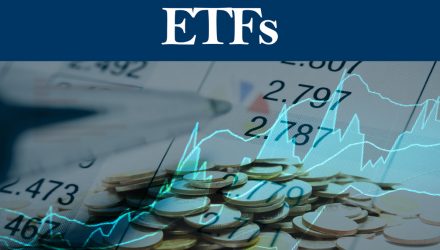The last thing the general populace wanted amid the pandemic was the Federal Reserve turning up the risk on its asset purchasing. However, as the Fed’s move to shore up the bond market showed some solid investment grade ETF purchases, they also took a different angle via funds like the VanEck Vectors Fallen Angel High Yield Bond ETF (BATS: ANGL).
ANGL seeks to replicate as closely as possible the price and yield performance of the ICE BofAML US Fallen Angel High Yield Index, which is comprised of below investment grade corporate bonds denominated in U.S. dollars that were rated investment grade at the time of issuance. ANGL essentially focuses on debt that has fallen out of investment-grade favor and is now repurposed for high yield returns with the downgraded-to-junk status.
Buying household corporate bond funds was to be expected by the Fed, but they mixed up their moves nicely with high yield debt purchases like ANGL. Of course, snatching up high yield debt was not a popular move within the capital market.
“The decision to invest in junk debt has been controversial. Some investors have argued that the central bank risked a deeper credit freeze that would lead to higher unemployment if the central bank shunned riskier assets, while others warned that doing so would reward firms and their investors that were already vulnerable to an economic downturn before the crisis due to heavy debt burdens,” a Wall Street Journal report noted.
“The disclosures of 158 transactions cover purchases made between May 12 and 18,” the report added. “Of the Fed’s $1.3 billion in ETF holdings as of May 19, around 17% were in funds that invest primarily in junk debt. The funds the Fed invested in have appreciated 2.7% on average since purchases began on May 12, according to Roberto Perli of Cornerstone Macro, a research firm.”
For another high yield option in addition to ANGL, take a look at the Goldman Sachs Access High Yield Corporate Bond ETF (GHYB). GHYB seeks to provide investment results that closely correspond, before fees and expenses, to the performance of the FTSE Goldman Sachs High Yield Corporate Bond Index.
The fund seeks to achieve its investment objective by investing at least 80% of its assets (exclusive of collateral held from securities lending) in securities included in its underlying index. The index is a rules-based index that is designed to measure the performance of high yield corporate bonds denominated in U.S. dollars that meet certain liquidity and fundamental screening criteria.
For more market trends, visit ETF Trends.








